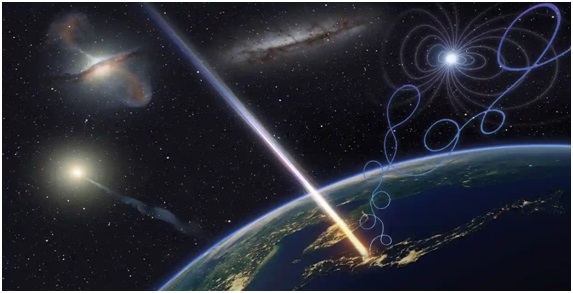High-energy Particle "Amaterasu" (Indian Express)

- 27 Nov 2023
Why is it in the News?
Scientists have detected one of the most powerful cosmic rays ever slamming into Earth but they have no idea what caused it or where it came from.
What is Amaterasu?
- The particle, named Amaterasu after the sun goddess in Japanese mythology, is one of the highest-energy cosmic rays ever detected.
- The Amaterasu particle has an energy exceeding 240 exa-electron volts (EeV).
- It is millions of times more than particles produced in the Large Hadron Collider, the most powerful accelerator ever built, and equivalent to the energy of a golf ball traveling at 95mph.
- It comes only second to the Oh-My-God particle, another ultra-high-energy cosmic ray that came in at 320 EeV, detected in 1991.
- Amaterasu appears to have emerged from the Local Void, an empty area of space bordering the Milky Way galaxy.
What are Cosmic Rays?
- Cosmic rays are high-energy particles, primarily protons and atomic nuclei, that originate from outer space and bombard Earth from all directions.
- They possess extraordinary energies, often exceeding those achievable in human-made accelerators.
- Created through various astrophysical processes, such as supernova explosions and the remnants of massive stars, cosmic rays travel through the vast expanse of space.
- Upon entering Earth's atmosphere, they collide with air molecules, initiating cascades of secondary particles.
- These rays play a crucial role in astrophysics, providing insights into the universe's most energetic phenomena.
- They contribute to our understanding of cosmic structures, magnetic fields, and the dynamics of celestial bodies.
- Despite their significance, the origins of certain ultra-high-energy cosmic rays remain mysterious, prompting ongoing research to unveil the secrets of these enigmatic particles.
